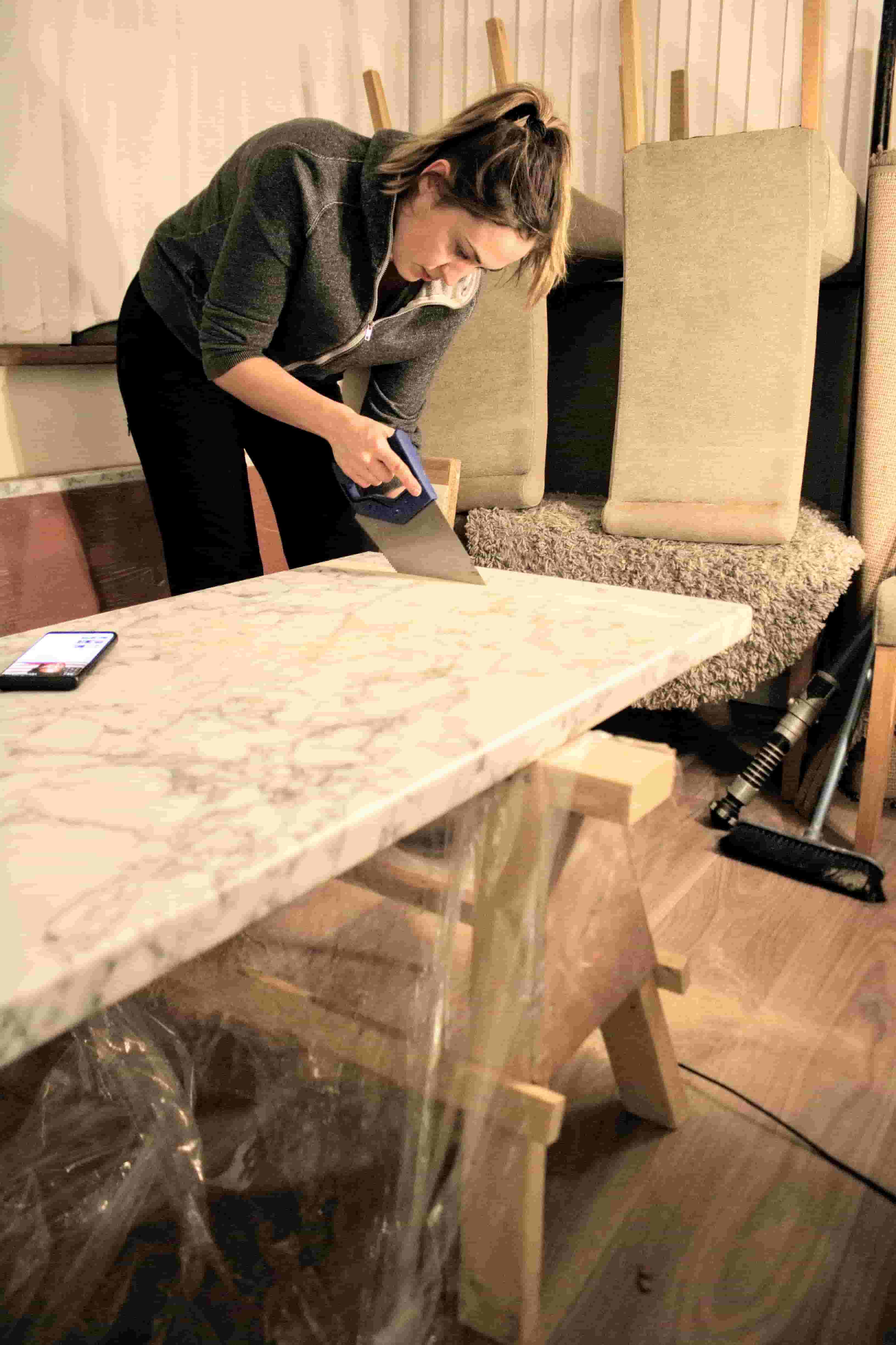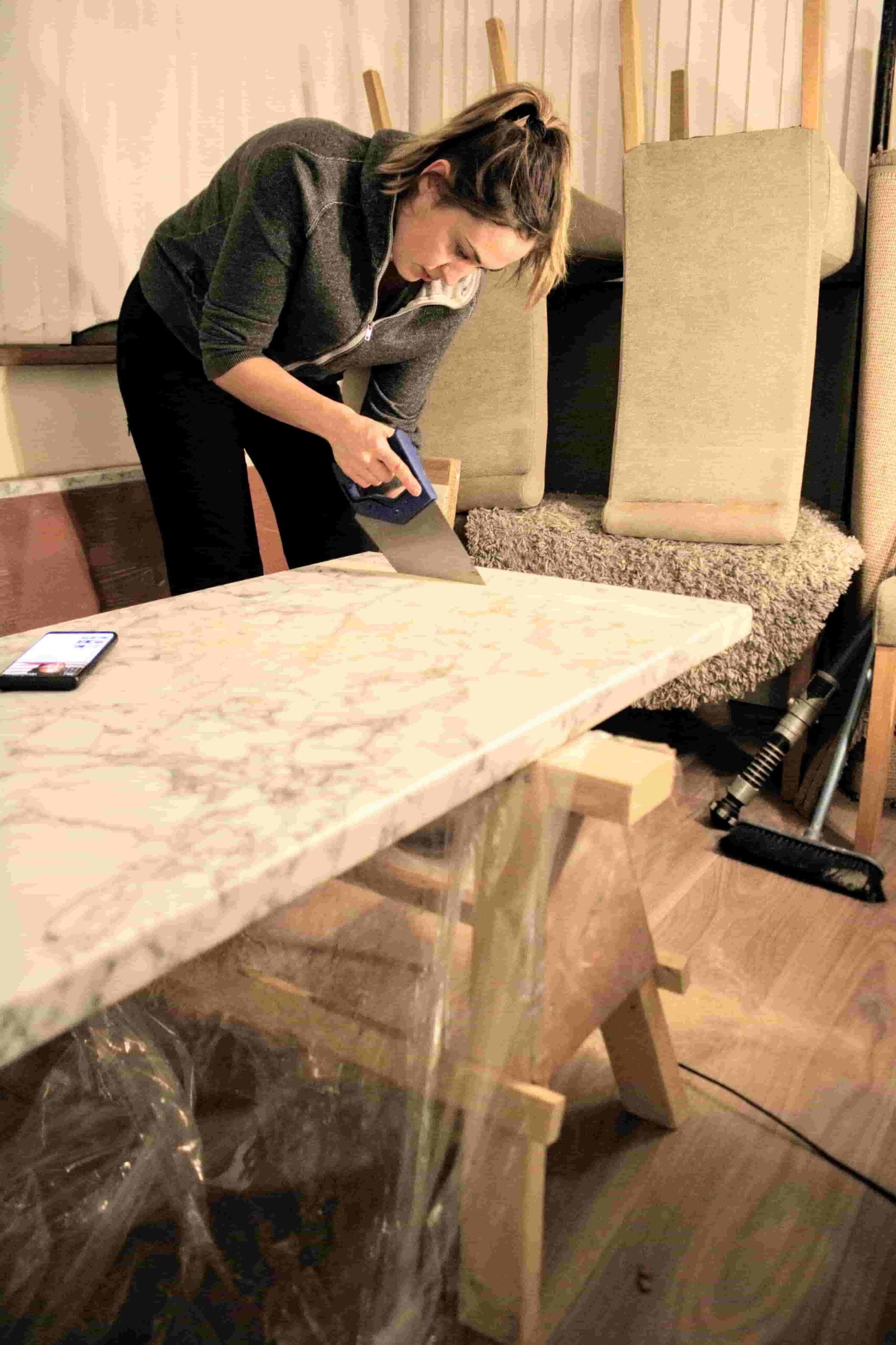Can you cut a kitchen worktop with a hand saw? It’s a question that many DIY enthusiasts have pondered. Well, my friend, I’m here to shed some light on this topic and give you the lowdown on whether it’s possible to tackle this task with just a trusty hand saw.
Now, when it comes to kitchen worktops, they can be made of various materials like wood, laminate, or even solid surfaces. And while some may think that you need fancy power tools to make the cut, the truth is, a hand saw can actually get the job done.
But before you grab your hand saw and start sawing away, let’s dive into the details and discuss the different factors you need to consider. So, stick around as we explore the ins and outs of cutting a kitchen worktop with a good ol’ hand saw.
1. Measure and mark the area you want to cut.
2. Use a straightedge to create a cutting guide.
3. Score the surface of the worktop along the cutting guide.
4. Apply gentle pressure to gradually deepen the cut.
5. Continue sawing until you’ve cut through.
6. Sand the cut edges for a smooth finish.
Remember to wear safety goggles and gloves while cutting. Cutting a kitchen worktop with a hand saw is possible, but using a power saw is recommended for cleaner and more efficient results.

Can You Cut Kitchen Worktop with a Hand Saw?
When it comes to DIY projects and home renovations, finding the right tools for the job is essential. One common question that arises during kitchen renovations is whether it’s possible to cut a kitchen worktop with a hand saw. In this article, we’ll explore the feasibility and challenges of using a hand saw for this task, as well as alternative methods and tips for achieving a clean and precise cut.
Alternative Methods for Cutting Kitchen Worktops
Although using a hand saw to cut a kitchen worktop is possible, it may not be the most efficient or accurate method. There are alternative tools that are specifically designed for this task and can ensure a more precise cut. One such tool is a circular saw, which is often preferred by professionals for its speed and accuracy. Another popular option is a jigsaw, which allows for more intricate cuts and curved edges. It’s important to consider the complexity of the cuts you need to make before deciding on the best tool for the job.
Using a Hand Saw for Cutting Kitchen Worktops: Challenges and Tips
If you still choose to use a hand saw for cutting your kitchen worktops, there are a few challenges you should be prepared to face. Firstly, the process will be more time-consuming compared to using power tools. Hand saws require manual effort and may require multiple passes to achieve a clean cut. Additionally, maintaining a straight line can be difficult without the aid of a guide or straight edge.
However, with the right techniques and precautions, it is possible to achieve satisfactory results with a hand saw. Here are a few tips to keep in mind:
- Choose a hand saw with fine teeth, such as a backsaw, for cleaner and smoother cuts.
- Mark the cut line carefully using a straight edge or a template to ensure accuracy.
- Apply masking tape along the cut line to reduce splintering or chipping of the worktop surface.
- Take your time and use steady, controlled strokes to maintain a straight line.
- Consider using a workbench or sawhorses to secure the worktop and provide stability during the cutting process.
Benefits of Using a Hand Saw for Cutting Kitchen Worktops
While using a hand saw for cutting kitchen worktops may have its challenges, there are some benefits to consider. One advantage is cost-effectiveness. Hand saws are generally more affordable than power tools, making them a budget-friendly option for DIY enthusiasts. Additionally, hand saws produce less noise and vibrations compared to power tools, making them more suitable for households where noise may be a concern. Hand saws also offer greater control, allowing for more precise cuts in certain situations.
However, it’s important to weigh these benefits against the time and effort required when deciding on the best tool for your specific project.
Alternatives to Using a Hand Saw
If you decide that using a hand saw is not the best option for your kitchen worktop cutting needs, there are alternative methods to consider. As mentioned earlier, circular saws and jigsaws are popular choices. Circular saws are known for their speed and accuracy, making them ideal for straight cuts. Jigsaws, on the other hand, offer more versatility and are suitable for curved or intricate cuts. Additionally, if you don’t have access to power tools, you can consider using a hand-held router or a handsaw specifically designed for rough cuts.
Each alternative method has its own pros and cons, so carefully consider your specific requirements before making a decision.
Conclusion
While it is possible to cut a kitchen worktop with a hand saw, it may not be the most efficient or accurate method. Using power tools, such as circular saws or jigsaws, is generally preferred for achieving precise and clean cuts. However, if you do choose to use a hand saw, follow the tips mentioned earlier for the best results. Consider the complexity of your cuts, the tools available to you, and your budget before making a decision. Whether you opt for a hand saw or an alternative method, remember to prioritize safety and accuracy throughout the cutting process.
Can You Cut Kitchen Worktop with a Hand Saw?
- Yes, you can cut a kitchen worktop with a hand saw.
- Make sure to use a fine-toothed hand saw for smoother cuts.
- Measure and mark the desired cut line accurately before starting.
- Apply masking tape along the cut line to minimize splintering.
- Take your time and use steady, controlled strokes to cut the worktop.
Frequently Asked Questions
Are you wondering if it’s possible to cut a kitchen worktop with a hand saw? We’ve got you covered! Here are some common questions about cutting kitchen worktops with a hand saw, along with their answers.
1. What tools do I need to cut a kitchen worktop with a hand saw?
When cutting a kitchen worktop with a hand saw, you’ll need a few essential tools. Along with the hand saw, you’ll also require a clamp to secure the worktop, a ruler or measuring tape to mark the cutting line, and some sandpaper for smoothing the edges after cutting. Additionally, wearing safety goggles and a dust mask is highly recommended to protect your eyes and lungs from debris.
While a power saw may provide quicker results, using a hand saw can be a viable option for smaller, precise cuts. It might require more effort, but with the right tools and technique, you can achieve satisfactory results.
2. Can any hand saw be used to cut a kitchen worktop?
Not every hand saw is suitable for cutting a kitchen worktop. For this task, it’s best to use either a crosscut saw or a fine-toothed panel saw. Both types of saws have sharp, fine teeth that can make precise cuts in wood, which is essential for working with kitchen worktops. Make sure the saw is in good condition and has a sharp blade before proceeding with the cutting process.
Remember, using the right type of saw will make the cutting process smoother and help you achieve cleaner cuts on your kitchen worktop.
3. Can I cut any type of kitchen worktop with a hand saw?
While it’s possible to cut various types of kitchen worktops with a hand saw, some materials are more challenging to cut than others. Solid wood worktops and laminate worktops are generally easier to cut with a hand saw. However, worktops made of materials like granite or quartz may require specialized tools due to their hardness. If you’re unsure about cutting a specific type of worktop with a hand saw, it’s recommended to consult a professional or use alternative cutting methods.
Always consider the material of your kitchen worktop before attempting to cut it with a hand saw, as some materials may present significant challenges.
4. What precautions should I take when cutting a kitchen worktop with a hand saw?
When cutting a kitchen worktop with a hand saw, safety should be a top priority. Here are a few precautions to follow:
First, ensure that the worktop is securely clamped down to prevent it from moving during the cutting process. This will help maintain accuracy and reduce the risk of accidents. Secondly, wear safety goggles to protect your eyes from sawdust and flying debris. Additionally, use a dust mask to prevent inhaling particles when cutting the worktop. Finally, take breaks if needed and always follow proper hand saw techniques to minimize the chances of injury.
5. What is the recommended technique for cutting a kitchen worktop with a hand saw?
When cutting a kitchen worktop with a hand saw, it’s essential to use the correct technique. Start by marking the cutting line on the worktop using a ruler or measuring tape. Then, secure the worktop using clamps to prevent any movement. When actually cutting, use long and smooth strokes, allowing the saw to do the work. Applying excessive pressure can lead to inaccurate cuts or splintering.
For better results, consider making multiple passes with the saw, gradually deepening the cut. This approach helps maintain control and achieve cleaner cuts. Once the cutting is completed, use sandpaper to smooth the edges and remove any roughness. Take your time, be patient, and remember to prioritize safety throughout the process.

Summary
Cutting a kitchen worktop with a hand saw is possible, but it’s not the easiest option. Hand saws can take a long time and require extra effort. It’s important to use the right saw and take safety precautions. However, if you’re patient and have the right tools, you can get the job done.
In conclusion, while cutting a kitchen worktop with a hand saw is doable, it’s not the most efficient way. Consider using a power saw or hiring a professional for faster and more precise results. Safety should always be a priority when handling tools.
